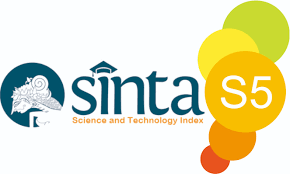Potensi Pengembangan Wisata Berbasis Masyarakat Di Desa Banyuanyar, Boyolali
 Abstract views: 632
,
Abstract views: 632
,
 PDF downloads: 786
PDF downloads: 786
Abstract
This study aims to find out how potentially Banyuanyar Village to developed into tourism village. Tourism village is form of implementation community based tourism. A purpose from community based tourism is to encouraged local community so they can be more prosperous. A village can be developed as well to be tourism village if fullfill several criteria tourism development. They are “potential product or potential attraction in destination”, “local community”, “potential of local human resources”, “availability of facilities and infrastructure”, and “ability to create a tourism market”. Based from thos criteria, Banyuanyar village has enough potential to be developed as a tourism village. A strong aspect are found on the tourist attraction. Currently Banyuanyar Village has been visited by tourists but is still limited to the coffee segment. The weakness that still needs to be improved is the ability to create markets. Banyuanyar village is currently still having difficulties in making tour packages, and to determine the right market segment and the right marketing strategy.
Downloads
References
Astuti, L.I, Hermawan, Rozikin, M. 2015. Pemberdayaan Masyarakat Dalam Pembangunan Pertanian Berkelanjutan. Jurnal Administrasi Publik JAP, Vol. 3, No. 11, hal.1886-1892.
Brohman, J. 1996. New Directions for tourism in the thirld world. Annals of tourism research vol. 23, no 1, hal 48-70.
Demartoto, A. 2009. Pembangunan Pariwisata Berbasis Masyarakat. Sebelas Maret University Press. Surakarta.
Hadiwioyo, S.S. 2012. Perencanaan pariwisata pedesaan berbasis masyarakat (sebuah pendekatan konsep). Yogyakarta : Graha Ilmu
Direktorat Pemberdayaan Masyarakat. 2013. Buku Panduan Kriteria Pengembangan Desa Wisata. Kementerian Pariwisata dan Ekonomi Kreatif. Jakarta.
Khamidah, A. Antarlina, S.S. Sudaryono, T. 2017. Ragam Produk Olahan Temulawak untuk Mendukung Keanekaragaman Pangan. Jurnal Litbang Pertanian Vol. 36, No. 1 , Hal. 1 – 12.
Moleong, L.J. 2007. Metodologi Penelitian Kualitatif (edisi revisi). Rosda Karya. Bandung.
Nuryanti, W. 2015. The Power Of Culture In Sustainable Development. International Conference Culture in the Post-2015 Sustainable Development Agenda. May, 15, 2015. Hangzhou – RRC.
Pitana, G.I, Gayatri, P.G. 2005. Sosiologi Pariwisata. Andi. Yogyakarta.
Premisti, P.U.L., Setiadi, A. Sumekar, W. 2016. Pemasaran Susu di Kecamatan Mojosongo dan Kecamatan Cepogo, Kabupaten Boyolali. Jurnal Mediagro Vol. 12, No. 1, Hal. 27-34.
Rogi, C.H. 2015. Dinamika Pengembangan Desa WIsata Brayut di Kabupaten Sleman. Skripsi. Universitas Gadjah Mada. Yogyakarta.
Suisa, K., Febrilia, V. 2014. Gaya Hidup Minum Kopi di The Coffee Bean & Tea Leaf Plasa Tunjungan Surabaya. Jurnal Hospitality dan Manajemen Jasa Vol 2, No 2. Hal. 326 – 343.
Yoeti, O.A. 2008. Perencanaan dan Pengembangan Pariwisata. Pradnya Paramita. Jakarta.
Wrihatnolo, R.R, Nugroho, D.R, 2007. Manajemen pemberdayaan : Sebuah Pengantar dan panduan untuk Pemberdayaan Masyarakat. PT Elex Media Komputindo. Jakarta.
Authors who publish with this journal agree to the following terms:
- The author (s) keeps copyright on any article.
- The author grants the journal, right of first publication with the work simultaneously licensed under a Creative Commons Attribution License that allows others to share the work with an acknowledgement of the work’s authorship and initial publication in this journal.
- Authors can enter separate, additional contractual arrangements for the non-exclusive distribution of the journal’s published version of the work (e.g., post it to an institutional repository or publish it in a book), with an acknowledgement of its initial publication in this journal.
- Authors are permitted and encouraged to post their work online (e.g., in institutional repositories or on their website) prior to and during the submission process, as it can lead to productive exchanges, as well as earlier and greater citation of published work.
- We distributed the article, and any associated published material under the Creative Commons Attribution-Share alike 4.0 International License




